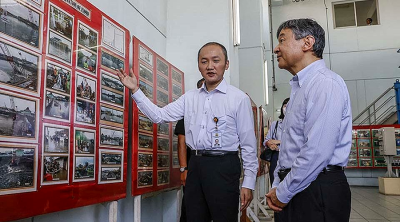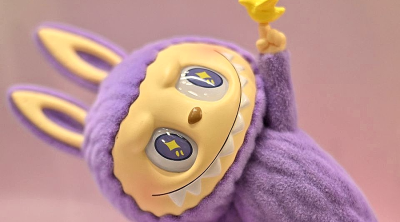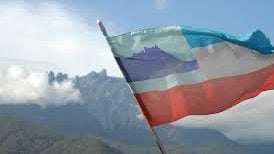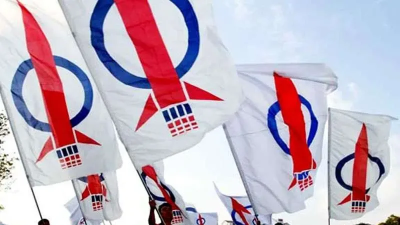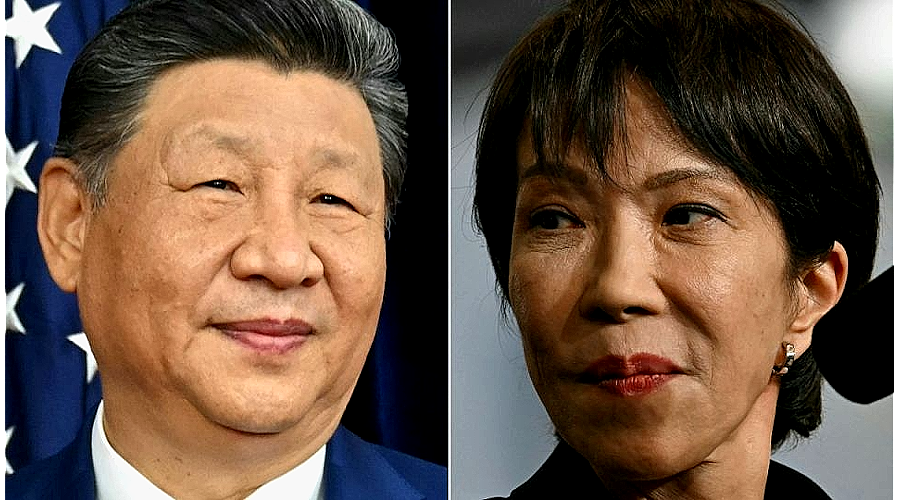
Set to a catchy hip-hop beat and featuring taunting animation, a Chinese music video on social media is calling Japanese Prime Minister Sanae Takaichi a “troublemaker” and warning her against “playing with fire” by interfering in the affairs of China and Taiwan.
Put up by Chinese state broadcaster CCTV on Nov 18, the video is just one from a flood of chest-thumping posts on Chinese social media amid an escalating diplomatic row between Beijing and Tokyo after Takaichi told the Japanese Parliament on Nov 7 that an attack against Taiwan could trigger a military response from Japan.
The use of such content that disparages the Japanese leader is part of China’s arsenal of tools to pressure Tokyo and to influence public opinion both at home and abroad over the spat.
“This… is very youthful and creative,” said the top comment on CCTV’s WeChat post of the video, which has been liked by more than 100,000 accounts and forwarded as many times.
“I love this style so much,” said another commenter.
The music video bears the watermark of a cartoonist with the moniker Tiantan View, whose Facebook page carries an e-mail address that CCTV has previously used to solicit video and photo submissions from netizens.
Its lyrics use the Chinese term “gaoshi” or “make trouble”, which is the homonym of Takaichi’s last name in kanji, “gaoshi” or “high city” in Chinese, to describe her remarks.
Notably, similar versions of the two-minute music video were also posted on the broadcaster’s Facebook and Instagram accounts a day later with English translations of the lyrics. Both platforms are banned in China.
The clever wordplay is just one example of how Beijing has leveraged softer tools in its armory of measures to press Takaichi to back down on her remarks about Taiwan, which have sparked one of the biggest bust-ups between the two countries in years.
About a week after Takaichi’s remarks, the Chinese government advised its citizens against visiting Japan and told those studying there to reconsider .
The travel boycott call, which is said to have led to the cancellation of close to 500,000 air tickets in three days, was followed by a suspension of Japanese seafood imports on Nov 19.
Beijing has threatened further measures to hurt Japan’s economy and to break off ties if Takaichi’s remarks are not retracted.
The escalating spat has also spilled online, with state media and state-backed commentators adding fuel to the fire.
For instance, official state news agency Xinhua published a series of political cartoons of Takaichi over the past week, posting them on American social media platform X which is also banned in China.
One depicts Takaichi burning a book labelled “Japan’s Pacifist Constitution” and another portrays her dancing off a cliff with the ghost of “militarism” over a sea of flames.
In retaliation, some Japanese netizens have reappropriated these cartoons.
For instance, they have edited one depicting Takaichi looking at a reflection of herself in Japanese military uniform to instead show Chinese President Xi Jinping looking at a reflection of Winnie-the-Pooh, a reference to previous online jokes about the Chinese leader’s resemblance to the Disney cartoon character.
A meeting between Chinese and Japanese foreign ministry officials on Nov 18 has also been used as fodder by netizens .
Photos that appeared to show Masaaki Kanai, head of the Japanese Foreign Ministry’s Asian and Oceanian Affairs Bureau, bowing before his Chinese counterpart Liu Jinsong after their meeting went viral, prompting Tokyo to lodge a complaint with Beijing over “uncoordinated” press arrangements.
Chinese media also latched on to Liu’s choice of clothing during the meeting, suggesting it was a symbol of defiance against Japanese imperialism.
A social media account affiliated with CCTV described his grey suit with a mandarin collar as similar to those worn by student protesters during the 1919 May Fourth Movement, an uprising triggered by provisions in the Treaty of Versailles that ended World War I, which provided for the transfer of Chinese territory in Shandong province to Japan.
Nanyang Technological University’s Associate Professor Dylan Loh, who studies Chinese foreign policy, said China is increasingly adept at using social media platforms—including those banned at home—to try and shape narrative and influence public opinion.
“These media tactics are often iterations and innovations from previous practices, so I don’t believe this is entirely novel,” he added.
The People’s Liberation Army, for example, has been producing slick music videos for at least a decade now, showcasing its military hardware and capabilities.
During a 2021 Communist Party of China study meeting, President Xi had called for Chinese media to improve the way it tells the country’s stories to a global audience.
With the latest spat, Prof Loh said, Beijing is targeting international audiences to delegitimize Takaichi and the Japanese government’s position on Taiwan, while also serving up a warning to others.
He noted that this playbook is neither exclusive nor unique to China.
But whether Beijing’s narrative will catch on beyond its borders remains to be seen, and opinion polls indicate that Takaichi still enjoys strong approval at home.
Prof Loh said: “It is far too early to conclude on the effectiveness of the media practices on the Japan-China spat, as it’s still early days.”
ADVERTISEMENT
ADVERTISEMENT









